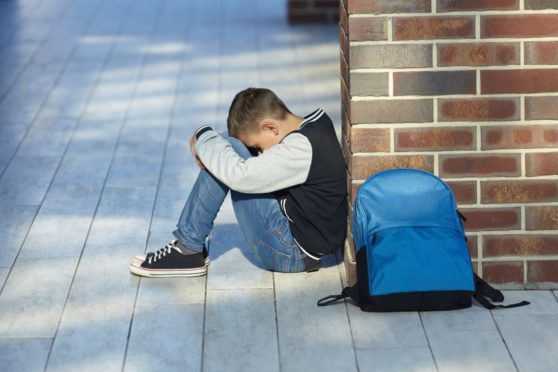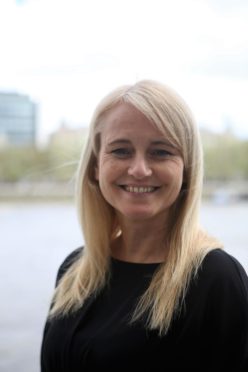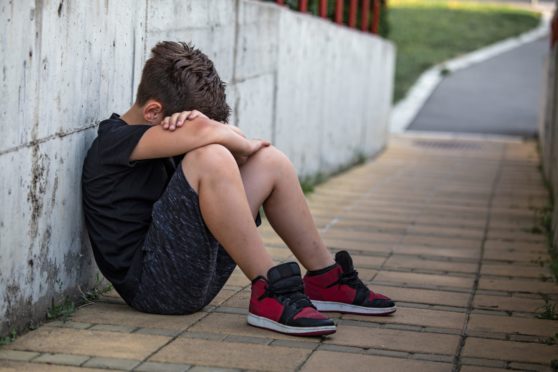More than half of Scottish adults taking part in research by an anti-slavery charity do not know what county lines crime is.
County lines involves criminal groups recruiting children to traffic drugs.
Unseen UK carried out the study which shows 51% of the Scottish respondents have little or no understanding of what it is.
Across the UK 32% didn’t know what county lines was.
The Scottish statistics from the research show 39% of parents wouldn’t feel confident spotting the signs that a child was being used for county lines, and 39% wouldn’t know what to do if their child had become involved in it.
And 38% wouldn’t feel confident about who to contact about it. The research also showed that 31% wouldn’t feel confident having a conversation with a child they suspected to be involved in county lines.
The findings are part of a new campaign by Unseen to raise awareness of county lines among parents, carers and other adults, and to encourage them to get help by contacting its Modern Slavery & Exploitation Helpline.
The research, conducted by poll group Opinium, comes amid a backdrop of growing numbers of children involved in modern slavery in the UK.
‘Children caught up in it are not criminals’
In 2020, nearly half (47%) of referrals to the Government National Referral Mechanism claimed they had been exploited as children.
Justine Currell, executive director of Unseen said: “Modern slavery takes many forms, including child exploitation and County Lines exploitation involving children.
“Of all the types of modern slavery, we were shocked to see awareness of County Lines was by far the worst, with nearly one in five people (19%) saying they have never heard of it.
“This compares to two per cent having not heard of human trafficking, three per cent forced labour, and eight per cent not aware of domestic servitude.”
Justine went on to say: “The more that people understand the issues, how to spot the signs and where to go for help, the sooner we can reverse the growing numbers of children involved in modern slavery.
“Children caught up in County Lines are not criminals – they are victims of exploitation at the hands of organised criminal gangs.”
What is County Lines?
County Lines describes the mobile phone lines used by criminal gangs to organise illegal drugs to be moved and sold from one village, town or city to another across the UK.
Children are most often used to move and sell the drugs. They are recruited by gang members who pose as friends and then trap the young people into a terrifying cycle of violence, exploitation and abuse.
Any child can be at risk from becoming involved in it.
What the research reveals
Across Scotland those taking part in the research thought the most vulnerable to being recruited to County Lines in the UK are:
- Children from low economic backgrounds (50%)
- Foreign nationals (32%)
- Children from ethnic minority backgrounds (32%)
- Children with disabilities (28%)
When asked who should take responsibility for County Lines:
- 73% felt it should be the police
- 54% said the government
- 36% thought it should be family
- 29% specified schools and education providers.
‘They don’t stand a chance’
Emily’s son Joshua grew up near a small town in the UK and became involved in with a gang who were dealing drugs from what’s known as a “cuckoo” house.
Cuckooing is where the gang takes over the home of a vulnerable person.
Eventually Joshua was arrested, but was identified as a victim of modern slavery, and the case was dropped against him.
Emily said: “Why do I think this all happened to my son? Yes, he has vulnerabilities, but to me, as his mum, he was the kid that never fitted in and then suddenly found he fitted in.
“I used to think kids who got involved with gangs were probably just naughty kids. But you don’t know anything until you’ve actually seen it yourself. They don’t stand a chance.”
Mum called helpline to save son
Fiona noticed that her son Daniel had started to change and was spending more time away from home.
Daniel had started using drugs and had lost weight.
Eventually Daniel revealed to Fiona that he had been befriended by members of a gang who offered him alcohol and drugs.
The gang members used this to create a “debt” that Daniel owed them.
To pay off the debt Daniel was forced to sell drugs on behalf of the gang.
If Daniel tried to leave them, the gang said they would track him down and cut off one of his limbs.
Daniel and Fiona were terrified, and Daniel was struggling to talk about what was happening to him.
Fiona phoned the helpline, and the team assessed that Daniel was a potential victim of criminal exploitation.
The advice to Fiona included information regarding the relevant powers police could use to protect Daniel. Also the support he would be eligible for through the National Referral Mechanism (NRM), and the statutory defence under the Modern Slavery Act.
Daniel and Fiona were also put in touch with a charity who would be able to complete an NRM application so Daniel could get formal support.
Daniel was not ready to speak to the helpline himself, but the helpline continued to support him indirectly by assisting Fiona in helping her son move on.
Read the Press and Journal series The Exploited here.
The Exploited: Human trafficking in the north and north-east exposed


